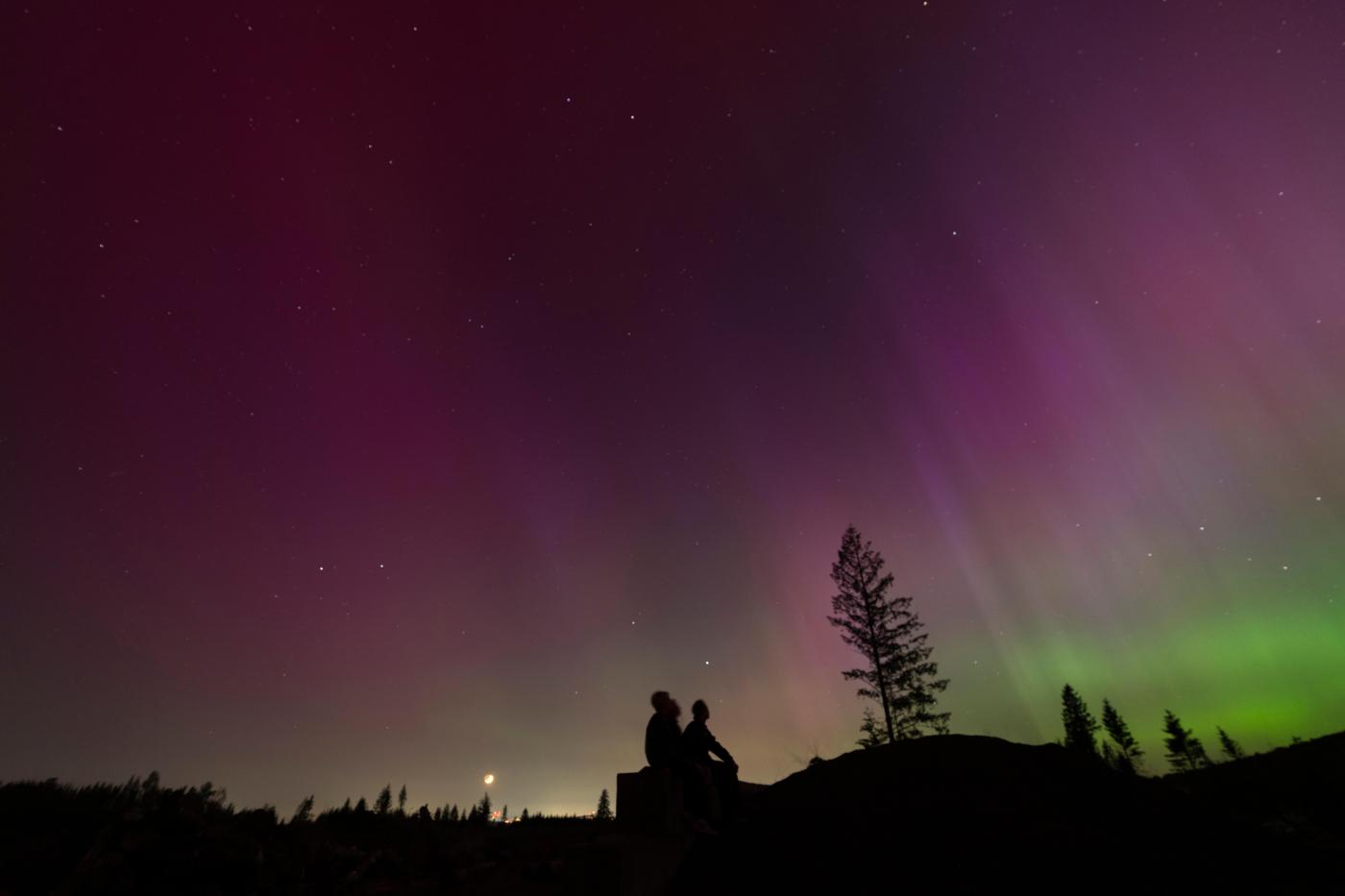By Tom Krisher, Josh Funk and Marcia Dunn | Associated Press
A powerful solar storm put on an amazing skyward light show across the globe overnight but has caused what appeared to be only minor disruptions to the electric power grid, communications and satellite positioning systems.
The U.S. National Oceanic and Atmospheric Administration said extreme geomagnetic storm conditions continued Saturday, and there were preliminary reports of power grid irregularities, degradation of high-frequency communications and global positioning systems.
But the Federal Emergency Management Agency said that as of early Saturday morning, no FEMA region had reported any significant impact from the storms.
NOAA predicted that strong flares will continue through at least Sunday, and a spokeswoman said in an email that the agency’s Space Weather Prediction Center had prepared well for the storm.
On Saturday morning, SpaceX’s Starlink satellite internet service said on its website that service had been degraded and its team was investigating. CEO Elon Musk wrote on X overnight that its satellites were “under a lot of pressure, but holding up so far.”
Brilliant purple, green, yellow and pink hues of the Northern Lights were reported worldwide, with sightings in Germany, Switzerland, London, Prague, Barcelona and elsewhere.
In the U.S., Friday’s night’s solar storm pushed the lights much further south than normal. People in Kansas, Nebraska, Iowa, Michigan, Minnesota and other Midwestern states were able to capture photos of colors along the horizon.
NOAA said the solar storm will persist throughout the weekend, offering another chance for many to catch the Northern Lights on Saturday night.
The agency issued a rare severe geomagnetic storm warning when a solar outburst reached Earth on Friday afternoon, hours sooner than anticipated.
NOAA alerted operators of power plants and spacecraft in orbit, as well as FEMA, to take precautions.
“For most people here on planet Earth, they won’t have to do anything,” said Rob Steenburgh, a scientist with NOAA’s Space Weather Prediction Center.
“That’s really the gift from space weather: the aurora,” Steenburgh said. He and his colleagues said the best aurora views may come from phone cameras, which are better at capturing light than the naked eye.
Snap a picture of the sky and “there might be actually a nice little treat there for you,” said Mike Bettwy, operations chief for the prediction center.
The most intense solar storm in recorded history, in 1859, prompted auroras in central America and possibly even Hawaii.
This storm poses a risk for high-voltage transmission lines for power grids, not the electrical lines ordinarily found in people’s homes, NOAA space weather forecaster Shawn Dahl told reporters. Satellites also could be affected, which in turn could disrupt navigation and communication services here on Earth.
An extreme geomagnetic storm in 2003, for example, took out power in Sweden and damaged power transformers in South Africa.
Even when the storm is over, signals between GPS satellites and ground receivers could be scrambled or lost, according to NOAA. But there are so many navigation satellites that any outages should not last long, Steenburgh noted.
Related Articles
Huge solar storm: Northern lights possible in California, sunspot visible with glasses
NASA watchdog report: 100+ cracks on heat shield biggest threat to human moon mission
Russia vetoes UN resolution against nuclear space race
Voyager 1 sending data to Earth for 1st time in 5 months
The Lyrid meteor shower peaks this weekend
The sun has produced strong solar flares since Wednesday, resulting in at least seven outbursts of plasma. Each eruption, known as a coronal mass ejection, can contain billions of tons of plasma and magnetic field from the sun’s outer atmosphere, or corona.
The flares seem to be associated with a sunspot that’s 16 times the diameter of Earth, NOAA said. It is all part of the solar activity ramping up as the sun approaches the peak of its 11-year cycle.
Dunn reported from Cape Canaveral, Florida, while Krisher reported from Detroit and Funk from Omaha, Nebraska.












